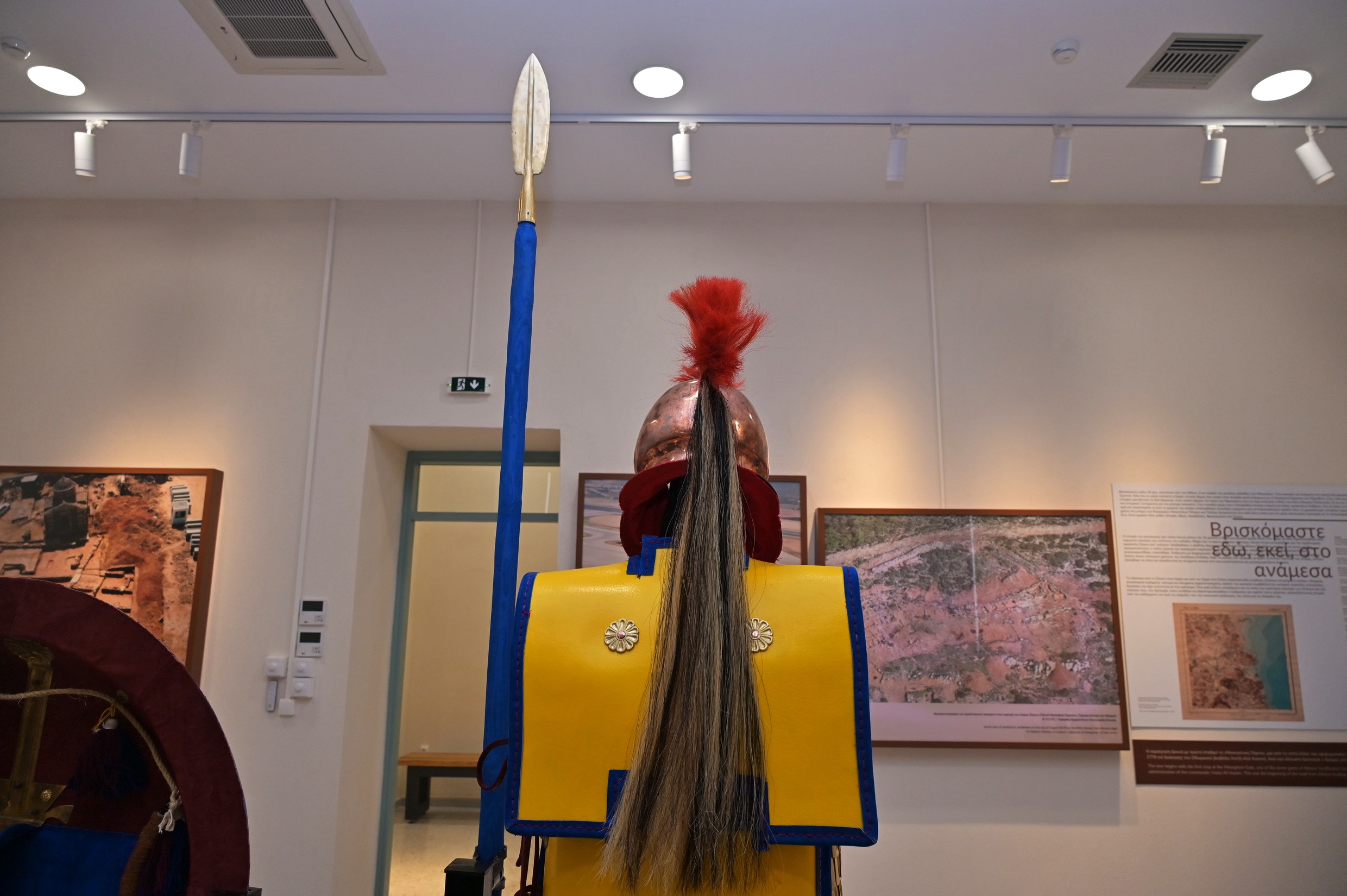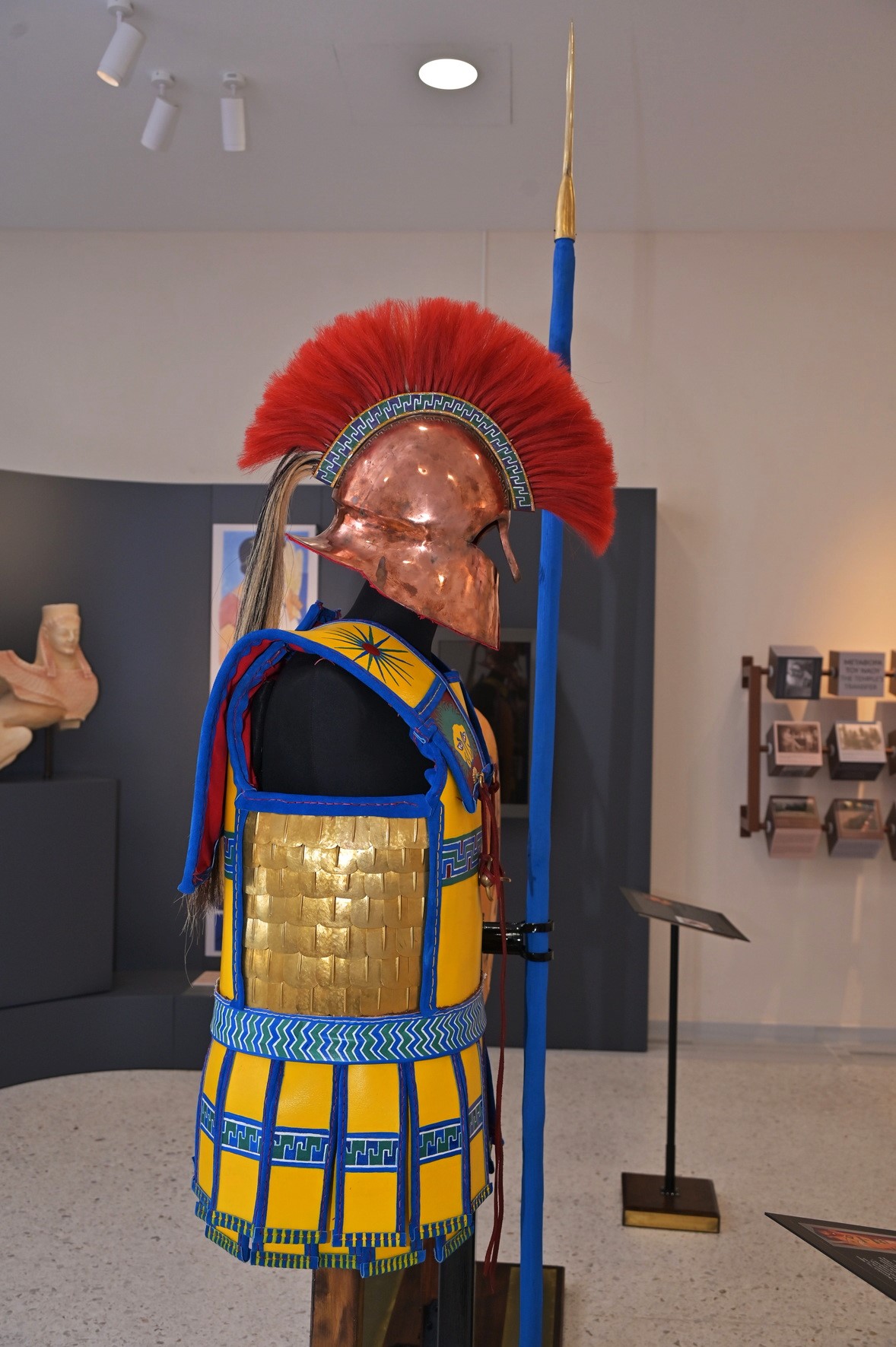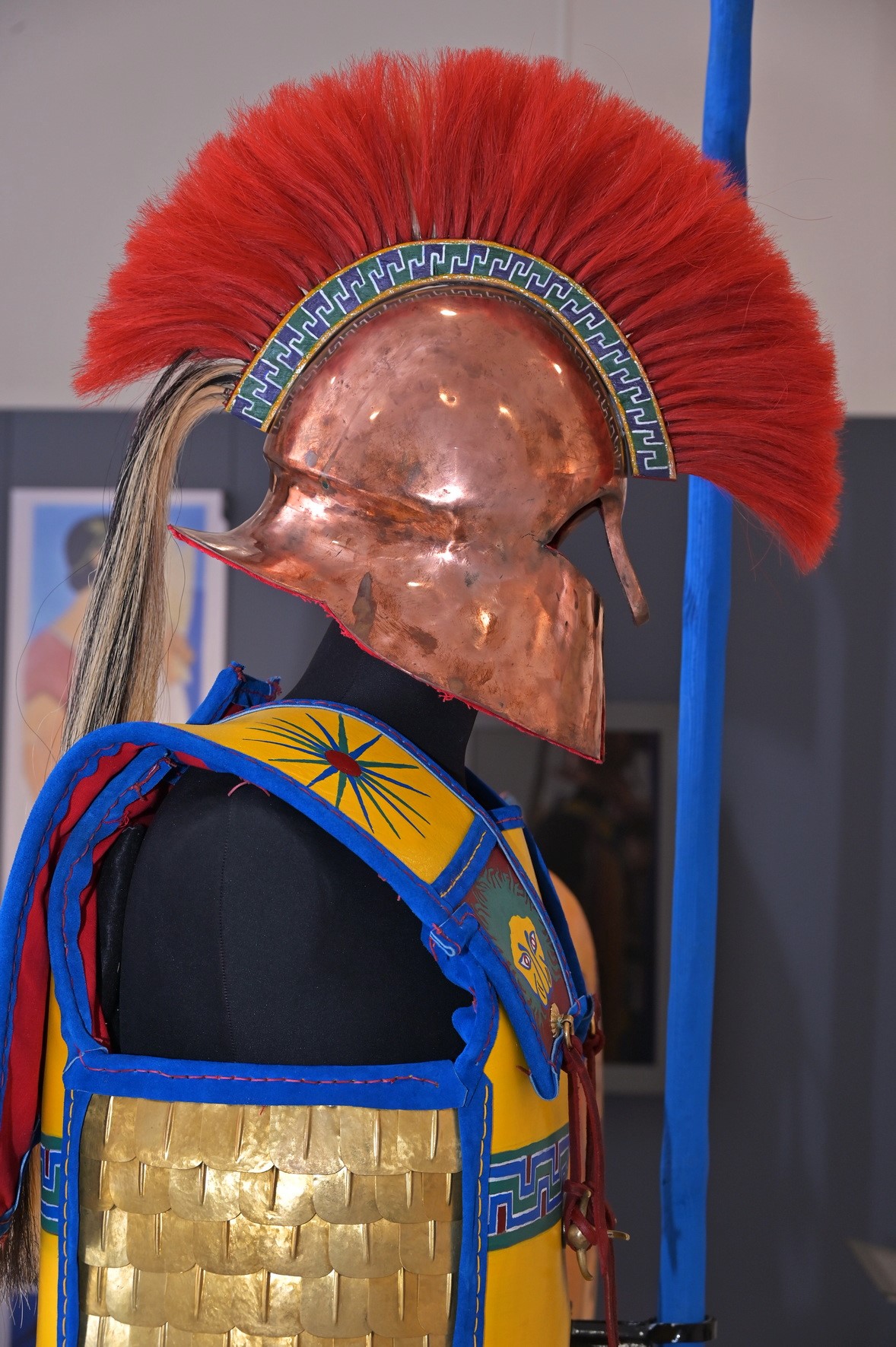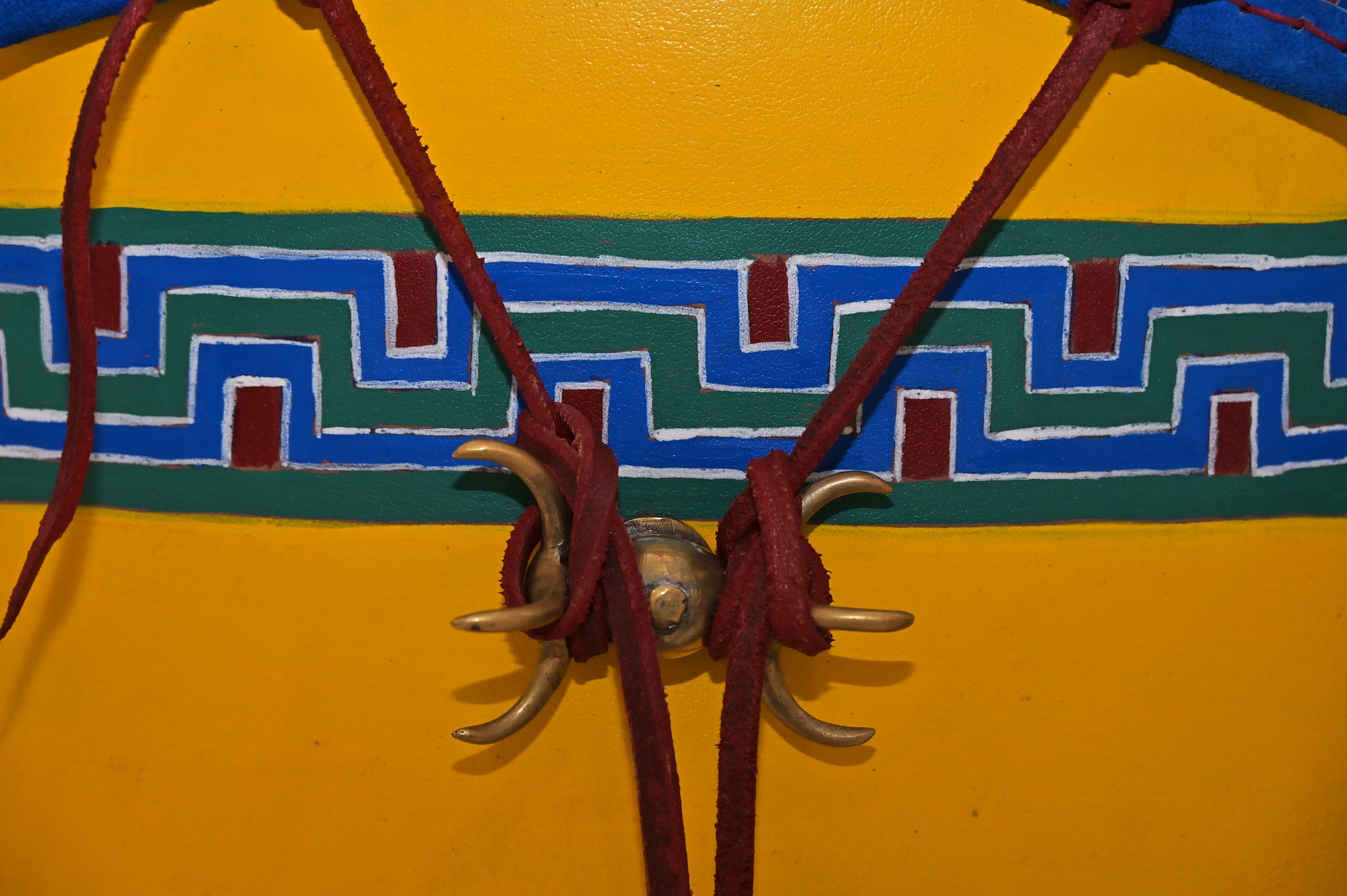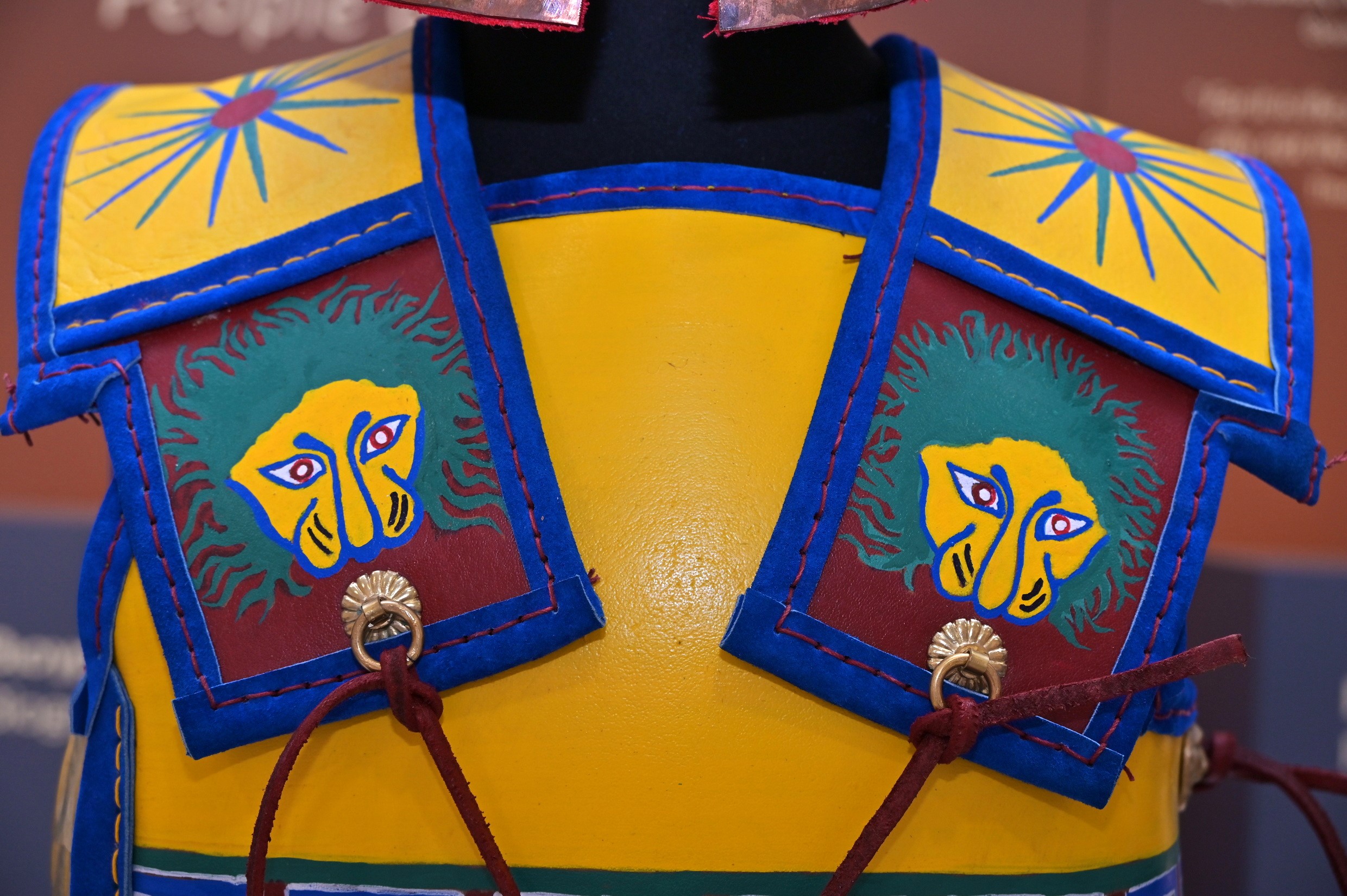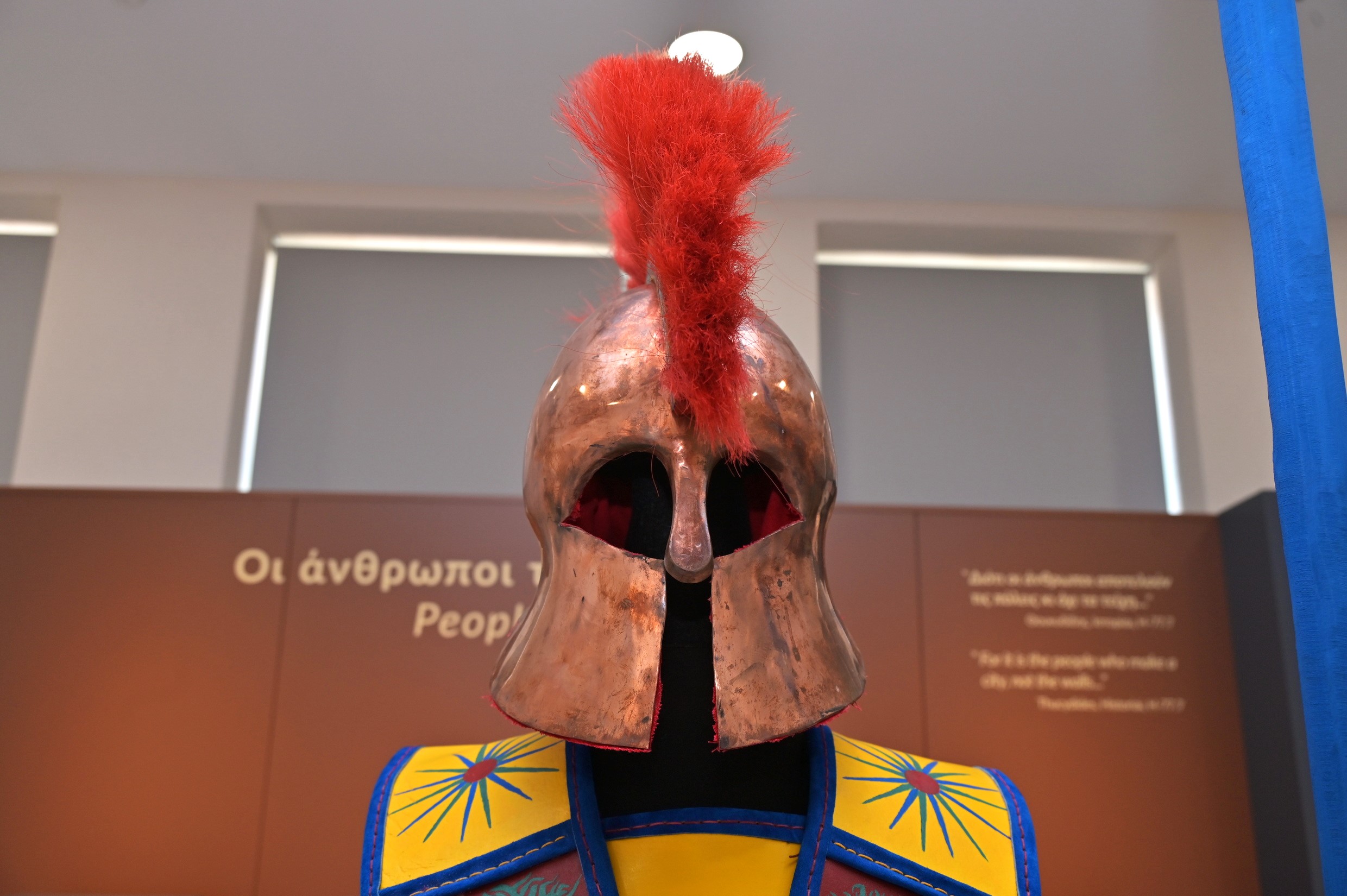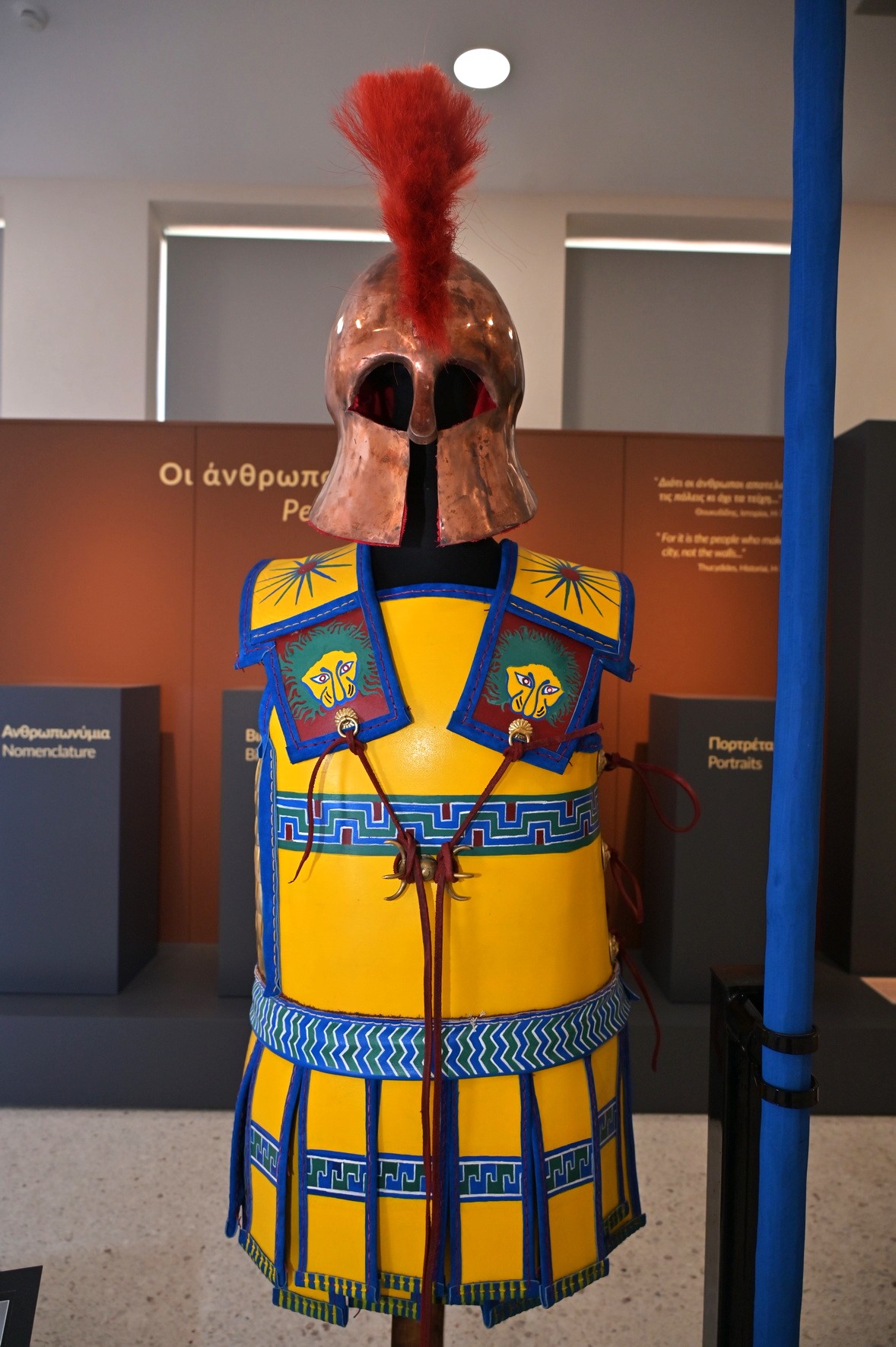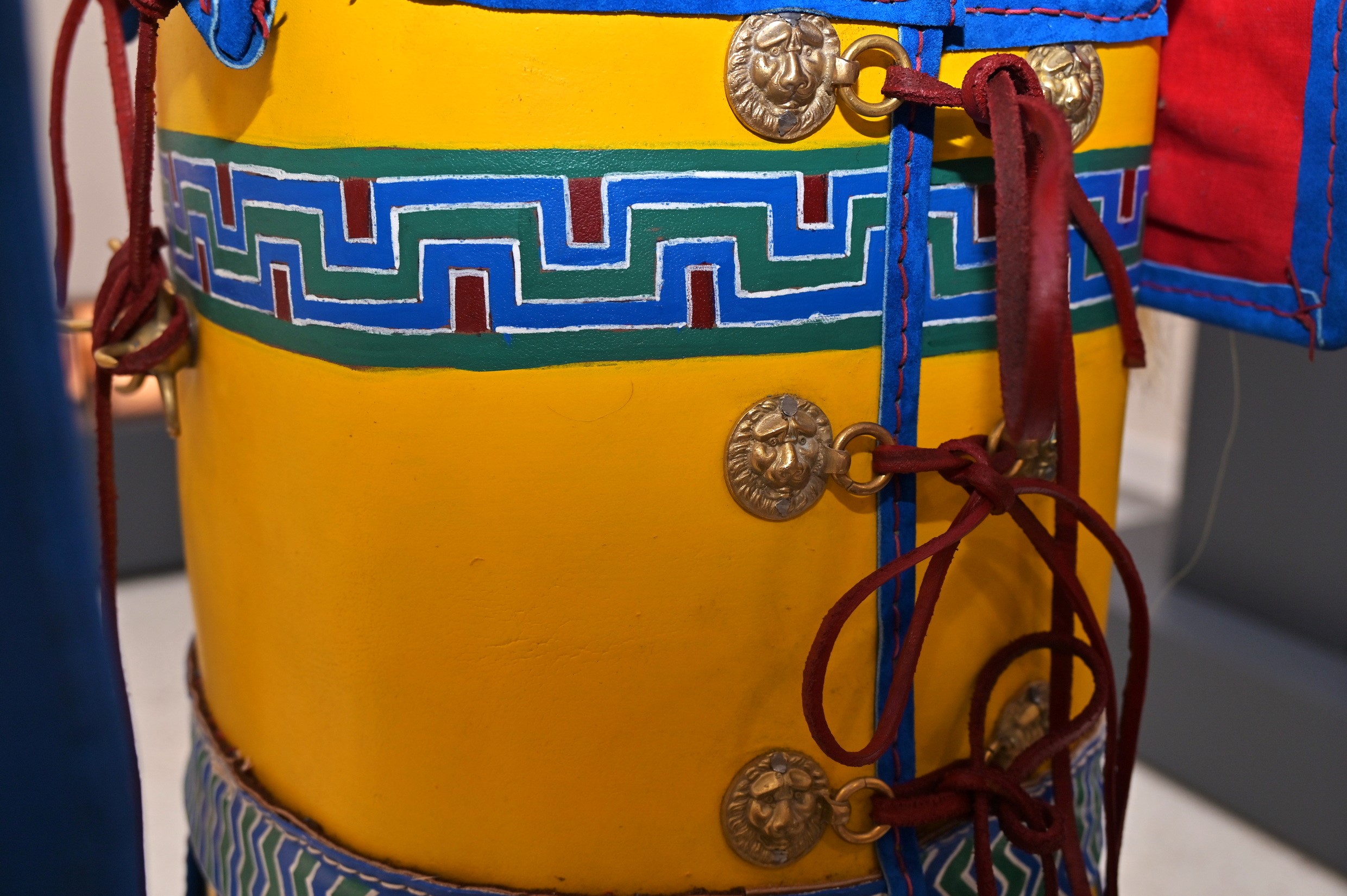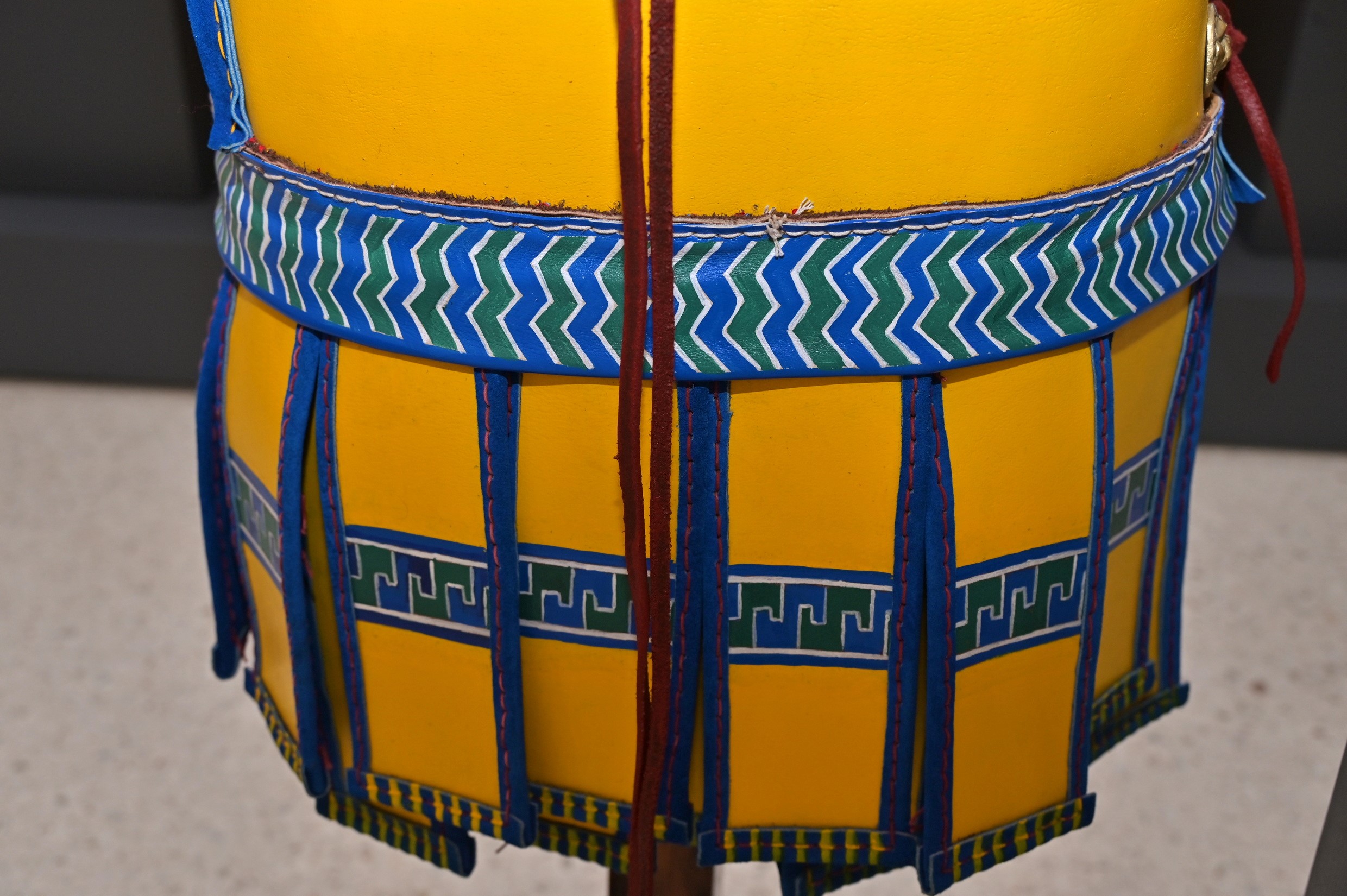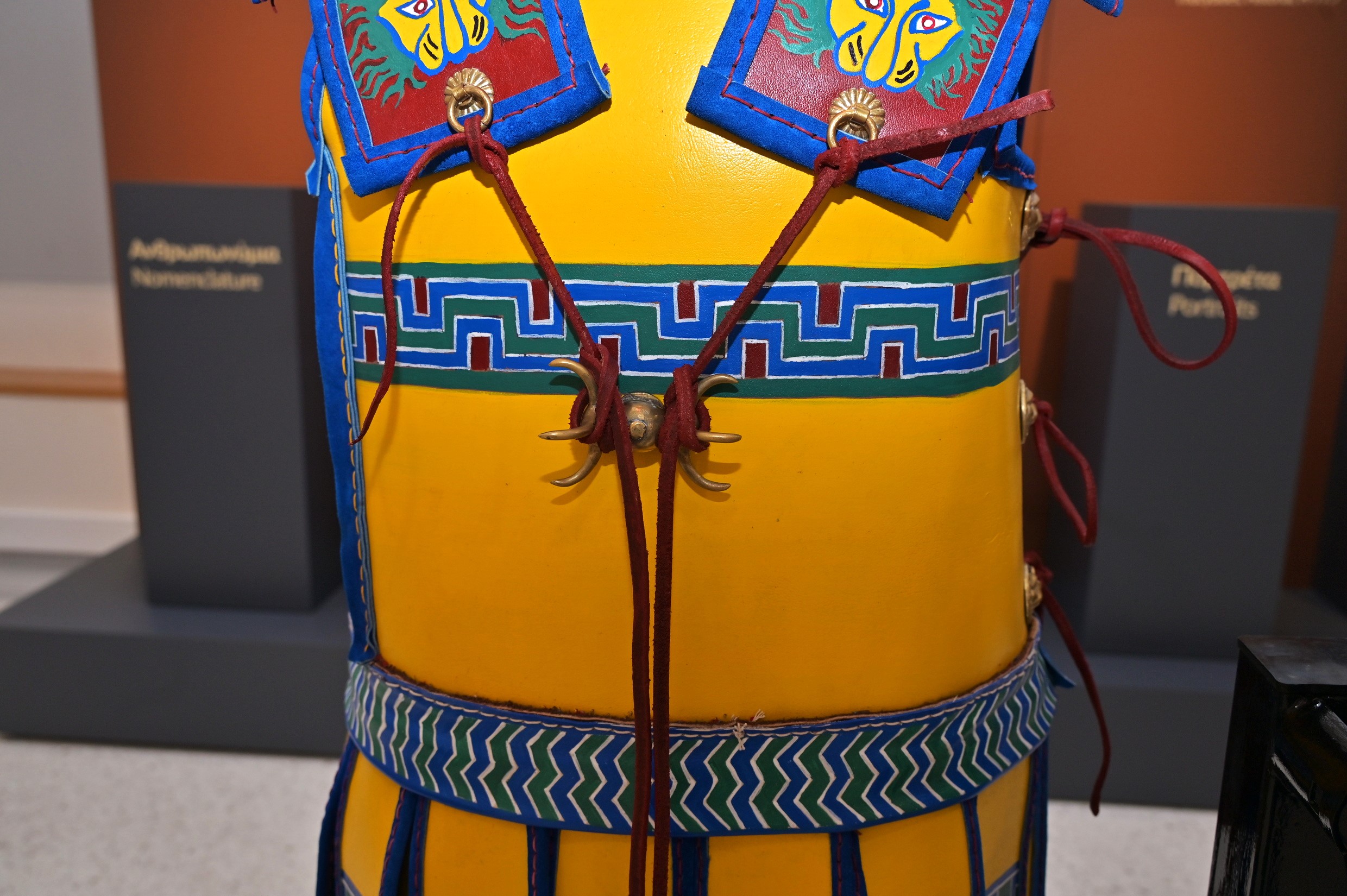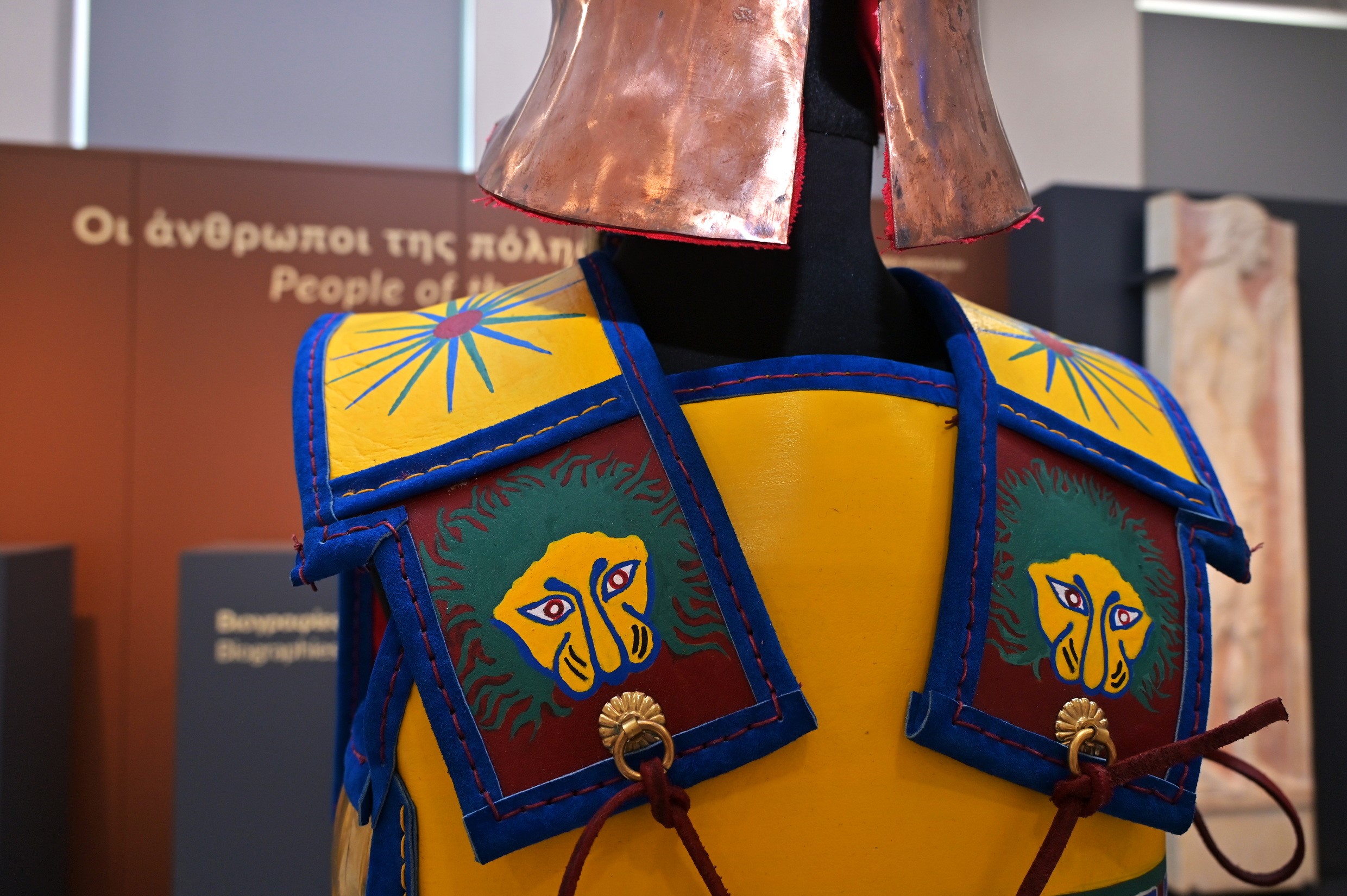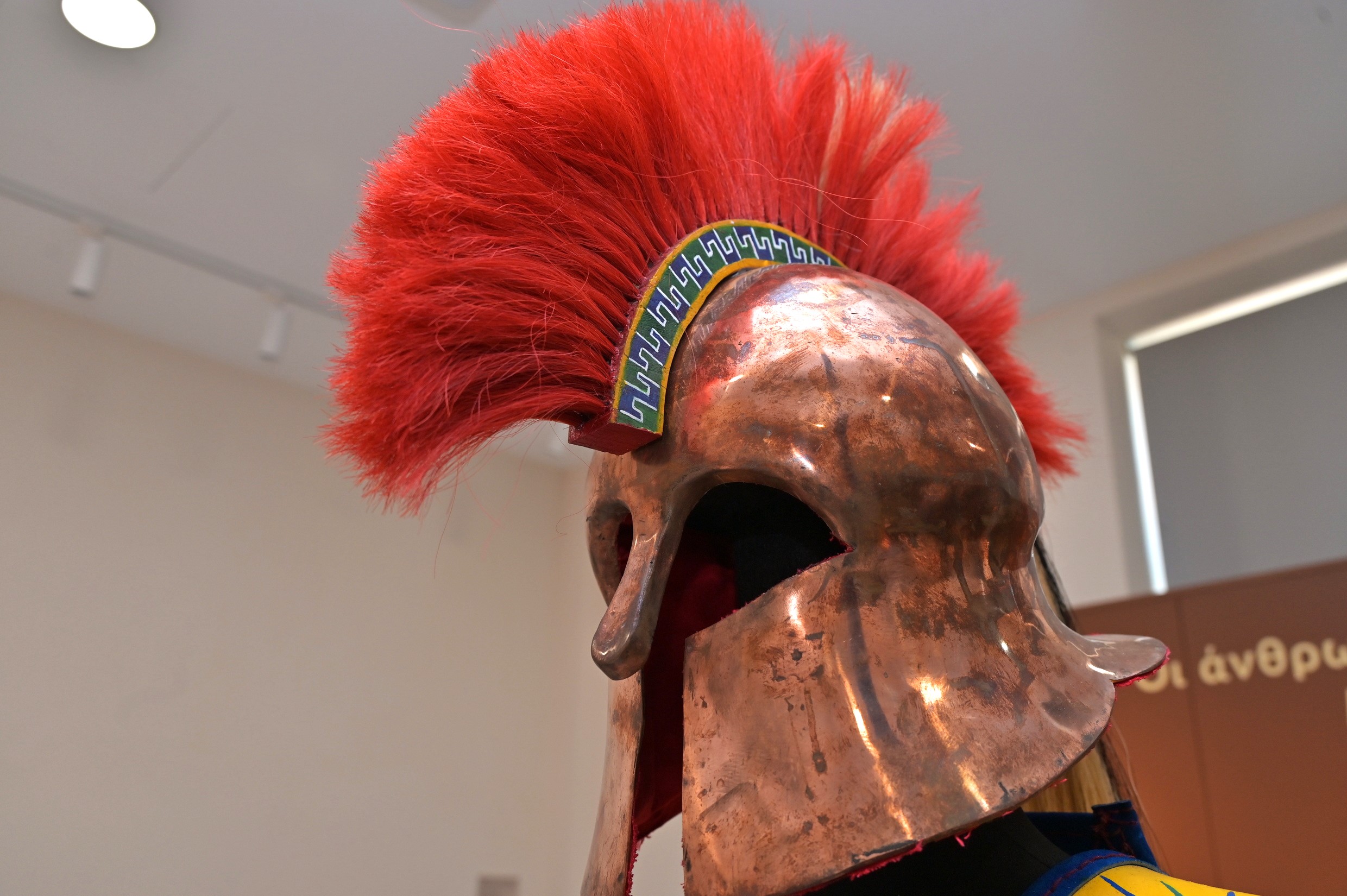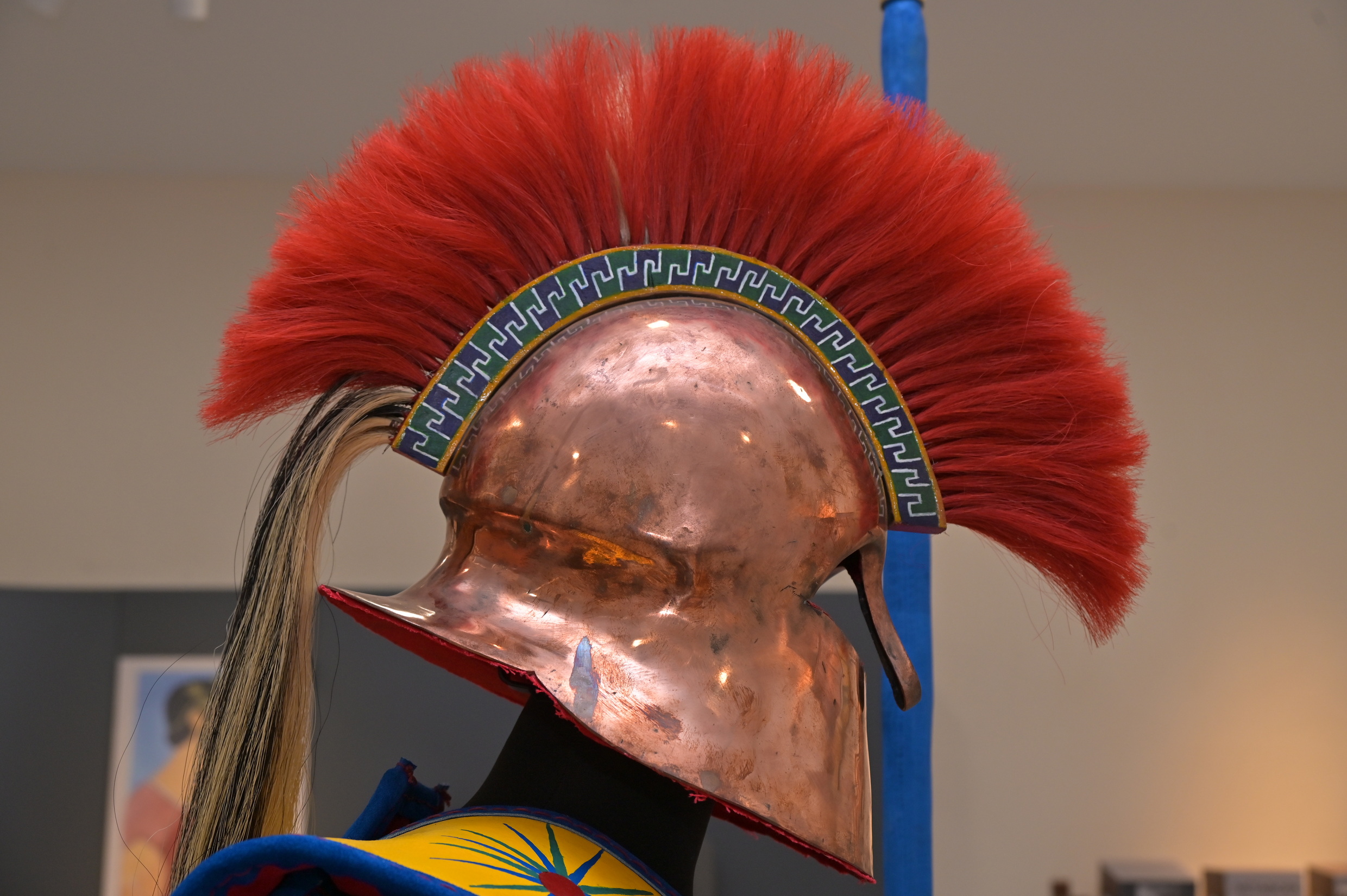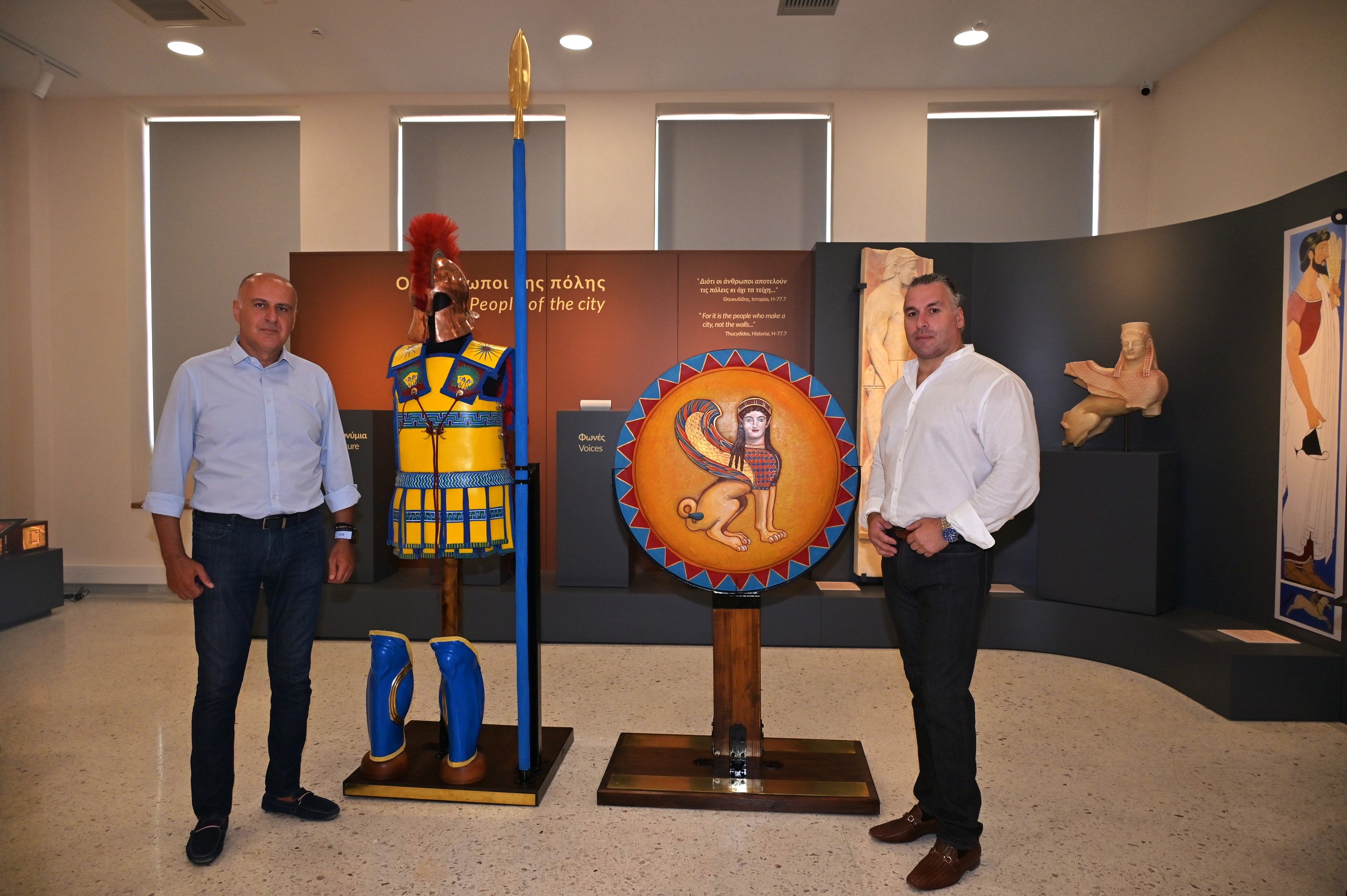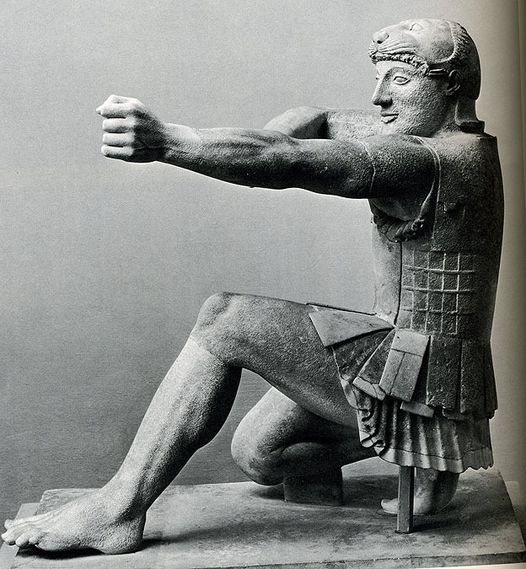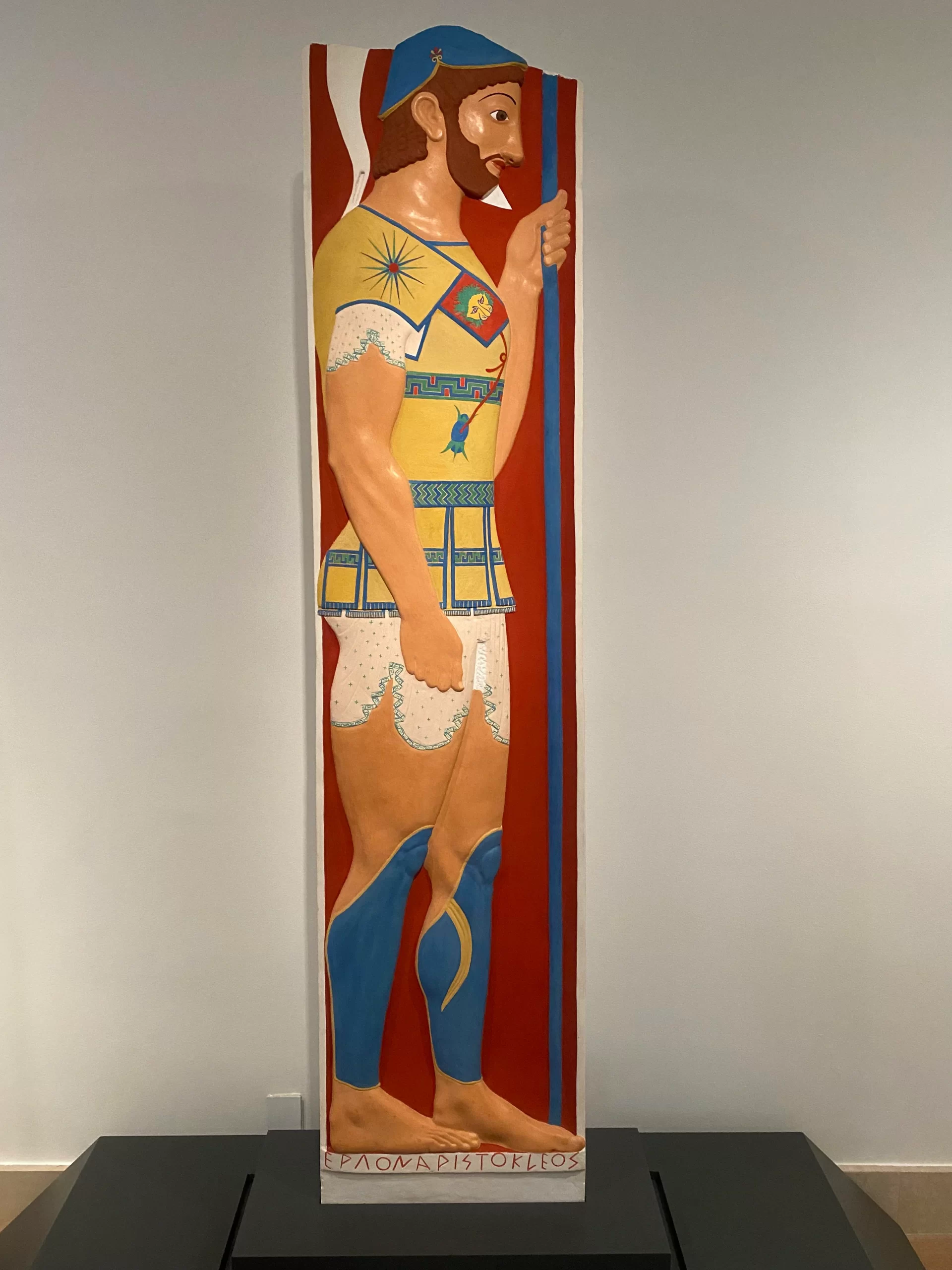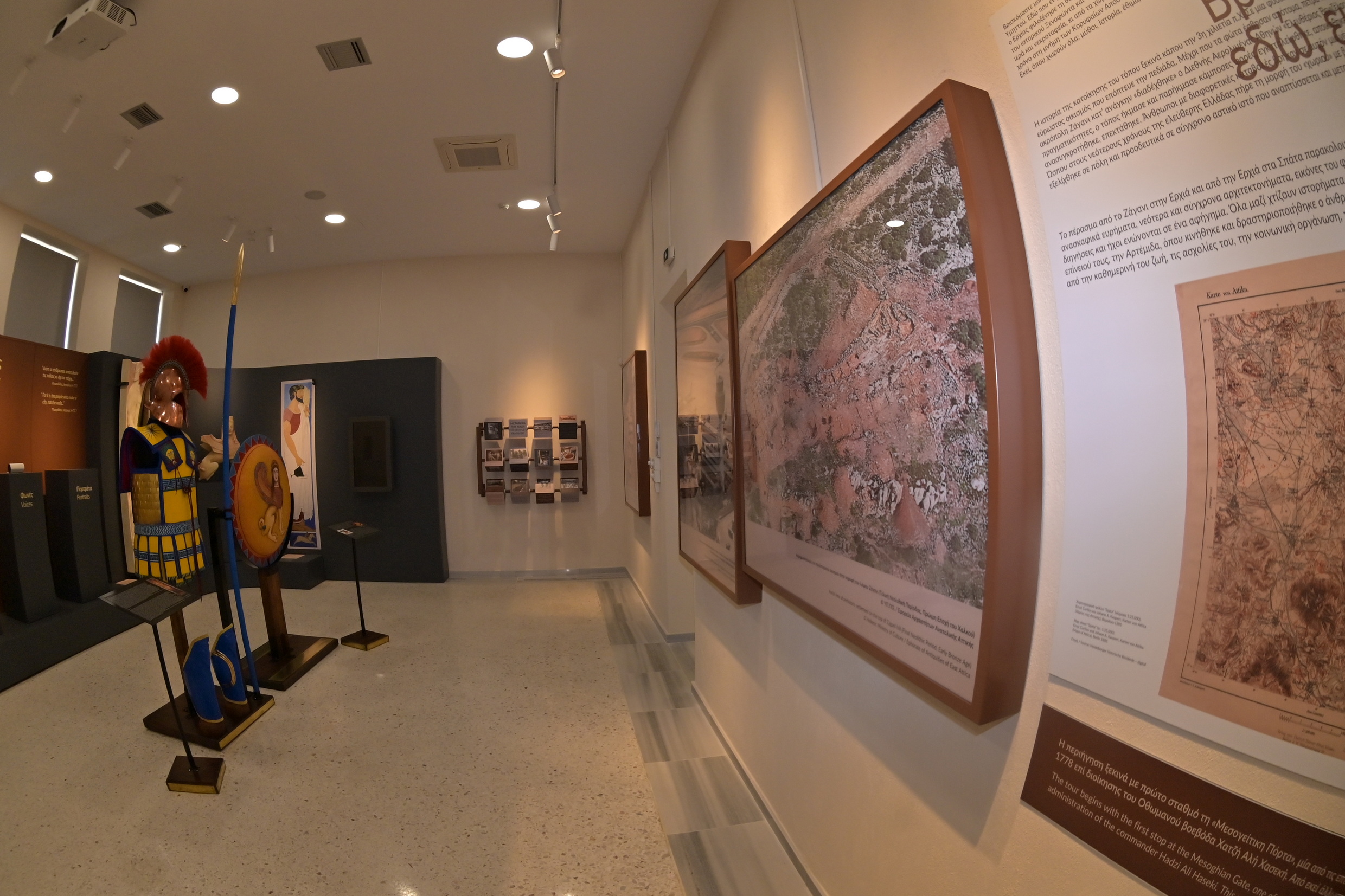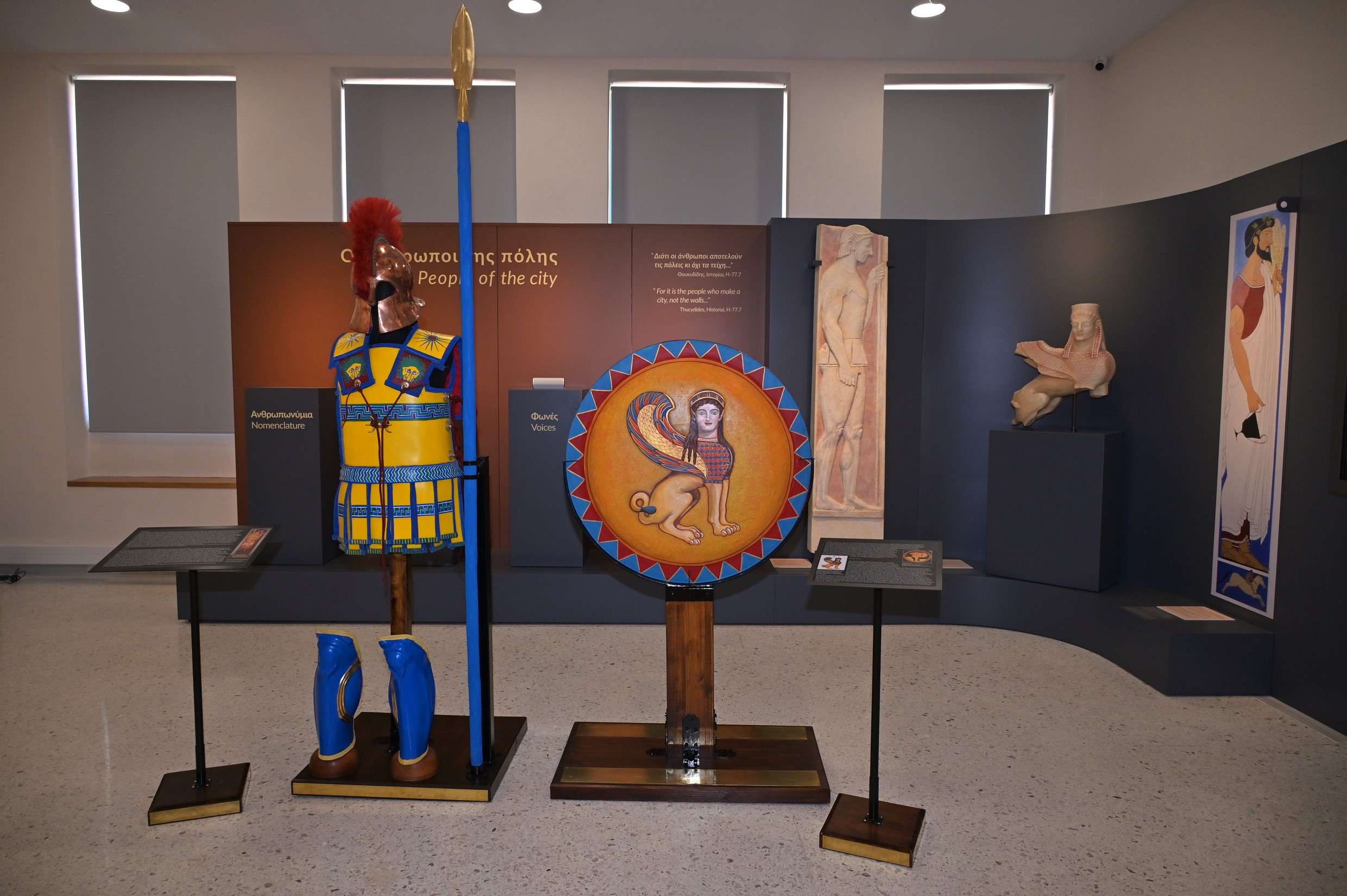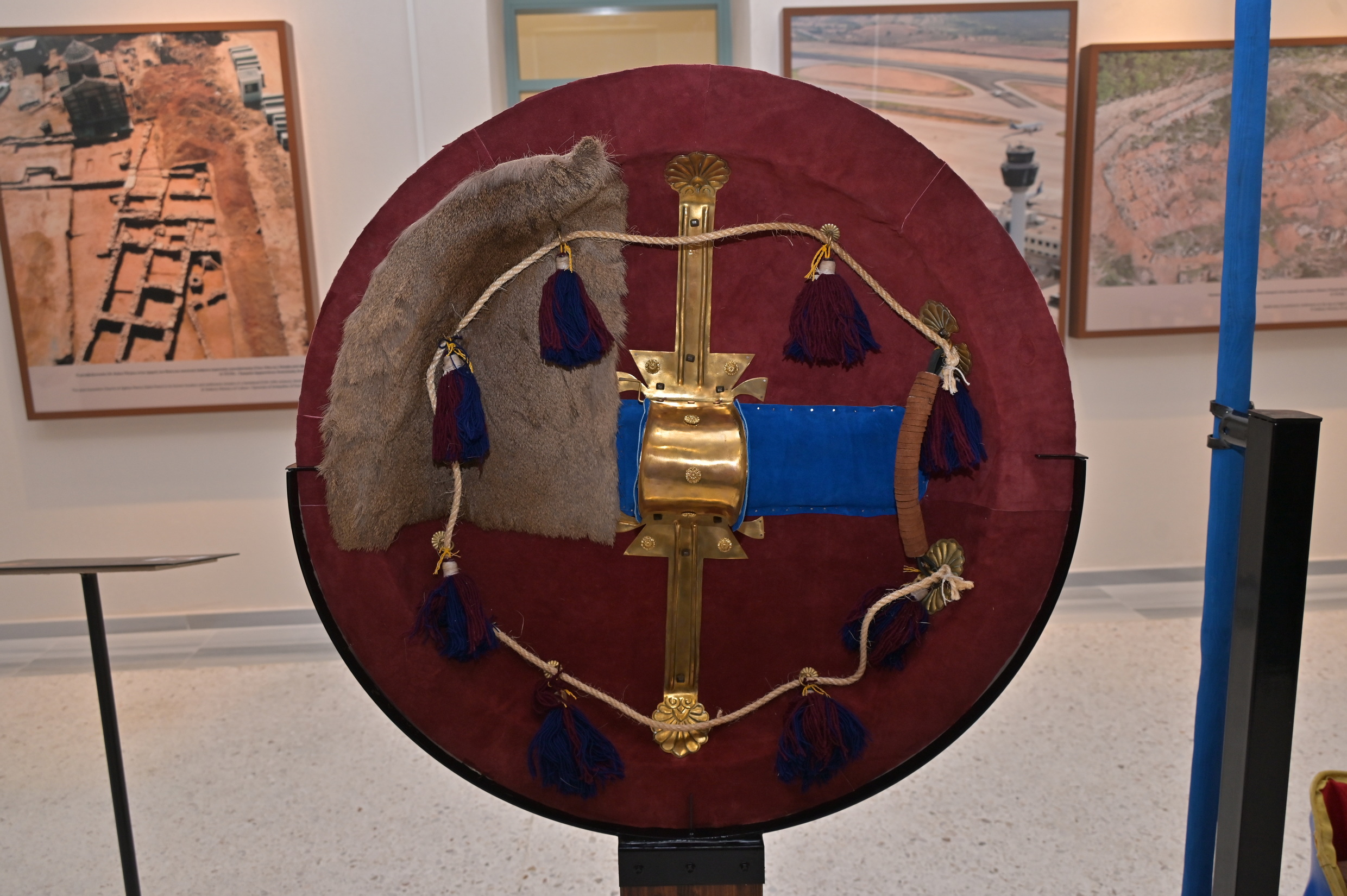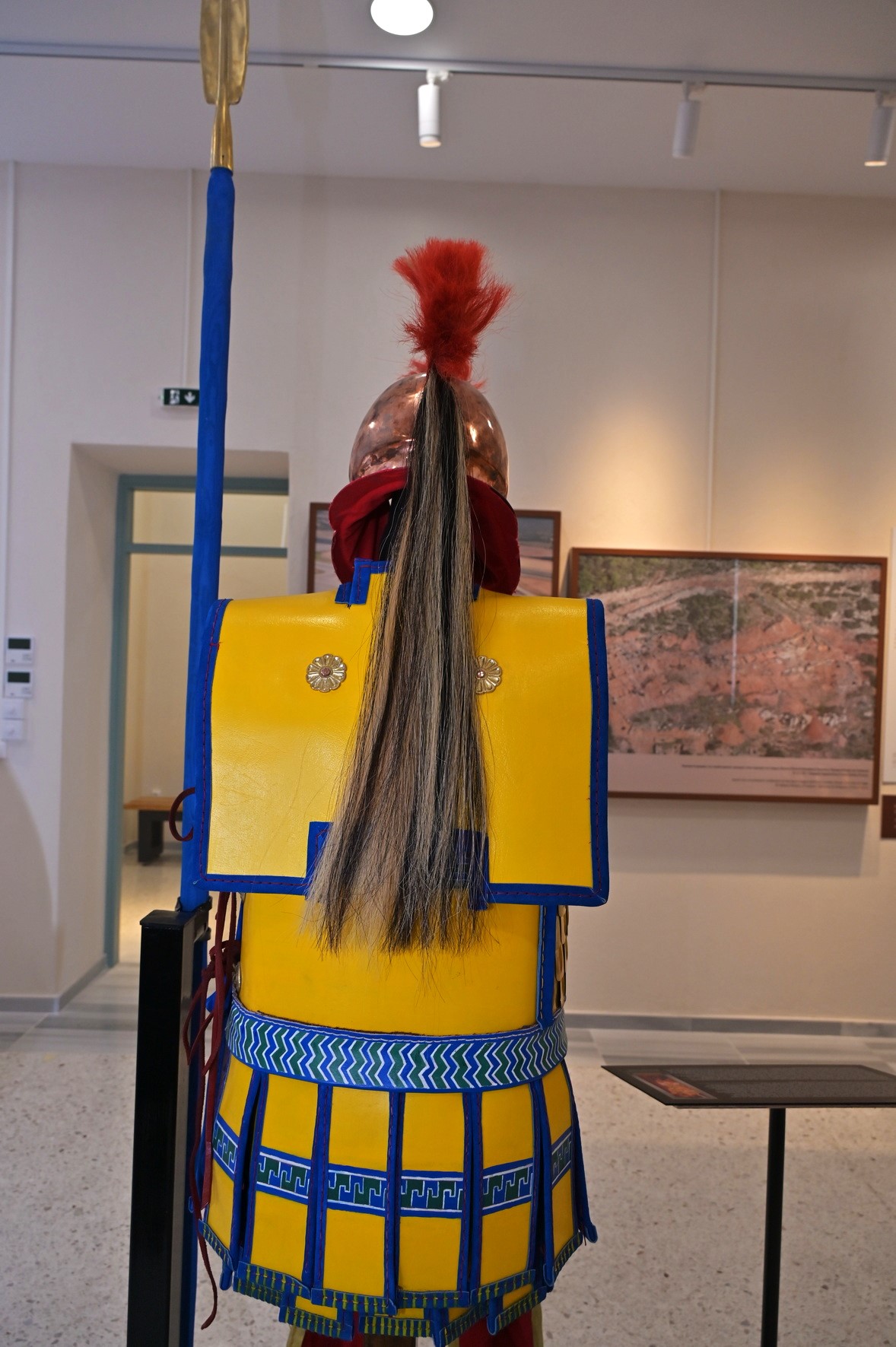Ancient Greek Armors
Armor of “Aristionos”, Citizen of Erchia (Spaton)
Αttica, Archaic period, 6th century BC.
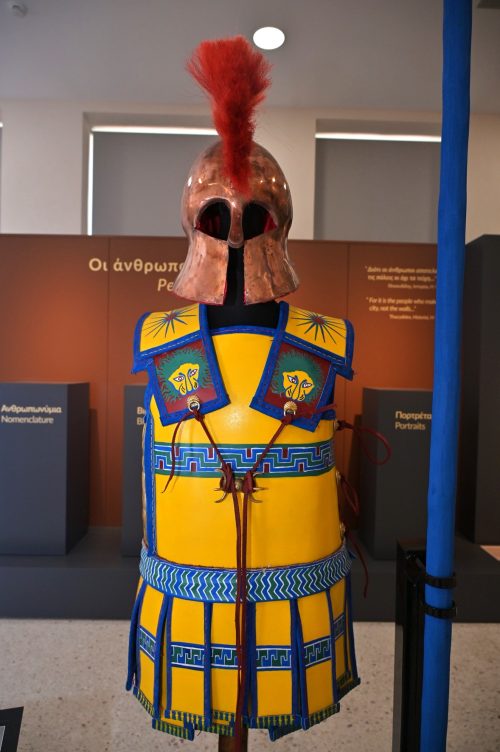
The funeral Stele of Aristion, was excavated at the “Velanideza” site of the present day Municipality of Spata. Dated to the end of the Archaic period (around 510 BC), it was fabricated out of Pentelic marble by the sculptor Aristokles (“ἔργον Αριστόκλεος”) and today it is on display in the National Archaeological Museum of Athens (inventory number: 29). The relief depicts a young bearded hoplite (facing right) at the apogee of his prowess carrying the standard defensive equipment of the period. This consists of body armor of the “Linothorax” type, a pair of anatomical greaves, a long spear and probably a Corinthian-type crested helmet as the upper part of the stele has not preserved( total height 2.02m and 0,24 m its base)
The reproduction of the defensive gears was based on relief ‘s anatomical details as well as on recreated stele displayed in the exhibition entitled “Coloured Gods – the polychrome of ancient statues”(original title in German: Bunte Götter – Die Farbigkeit antiker Skulptur ) in which marble sculptures from Ancient Greece were presented in their former colored state. The creator of the exhibition is the German Classical Archaeologist Vinzenz Brinkmann who since 1980 has been researching the polychrome of the statues and in 2003, in collaboration with the director of the Munich Sculpture Gallery Raimund Wünsche, inaugurated the exhibition in Munich. The reconstruction of the “ Aristion” column (Variant B’) was carried out in 2006 in collaboration with the painters Ulrike Koch-Brinkmann & Jorun Ruppel.
The main used material of the reconstructed corselet is thick vegetable tanned leather which has been painted with water soluble colors. The corselet follows the generic outline of a “Linothorax” typology, is being consisted by three parts a) Pauldrons (επωμίδες), the main torso and the lower double layers (πτέρυγες) for the thigh area protection. The right side of the torso (beneath armpit) has been covered with rectangular bronze scales, ensuring this exposed vanurable area from incoming threats.This feature has been based in many examples of the period (e.g. statue of Herakles from the Pediment of the Temple of Aphaia Athena in Aegina).
The pauldrons are decorated with a pair of colored stars and a pair of lion heads with frontal exposure. The main torso with a horizontal zone of repetitive geometrical patterns, a strip of zig zag zone cross all the lower circumference of the waist and lastly a band of meander has been painted in the middle of the exterior layer of thigh protection.
All the endings have been covered with folded blue leather stitched by hands.Three pairs of lion-shaped bronze rings secure the left armpit while the pair of rings at the edge of the pauldrons secure with leather straps to a spiky-looking fastening point in the center of the pectoral area(made of cast bronze) . The anatomical greaves are crafted from one piece of bronze,are colored blue and their inner side has covered with wool and linen.
The helmet is of the Corinthian style, hot-forged from a one piece copper disk (diameter 60 cm) and bears a colorful horsehair plume.
The aim of the reconstruction project is the recreation of Aristion’s armor in a life size physical dimension, the whole procedure tries to balance between existing archaeological findings and the sculptural creation of the Aristocles artist.It is an attempt to free Hoplite Aristion from a 2500 years immobility by giving himback the freedom of the three dimensions. The instalation was created by the traditional armor maker Katsikis Dimitrios as a tribute to his hometown in favor of the further Cultural enrichment of the Municipality of Spata -Artemidos.
